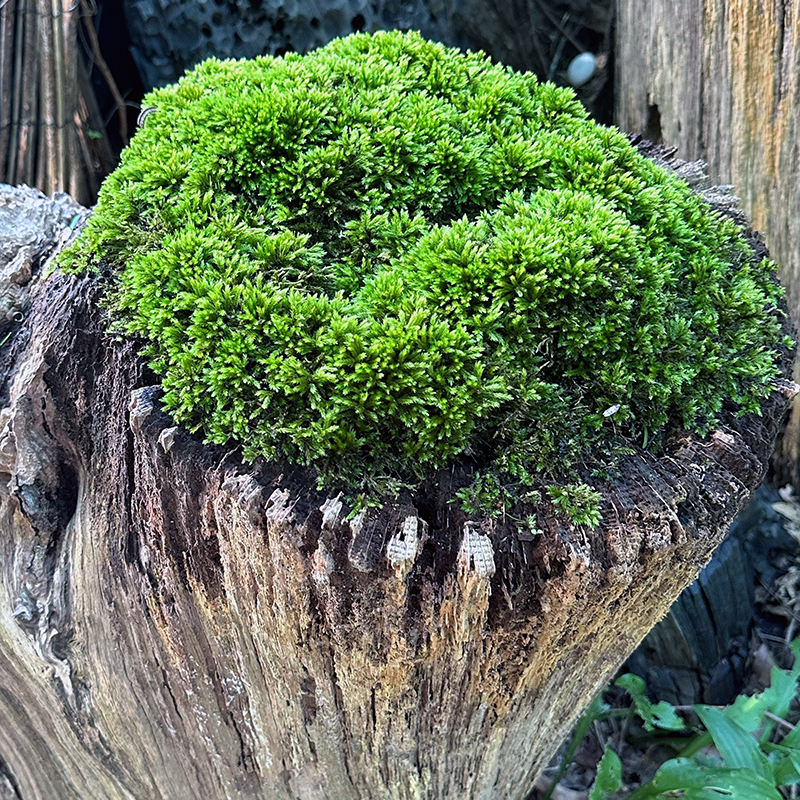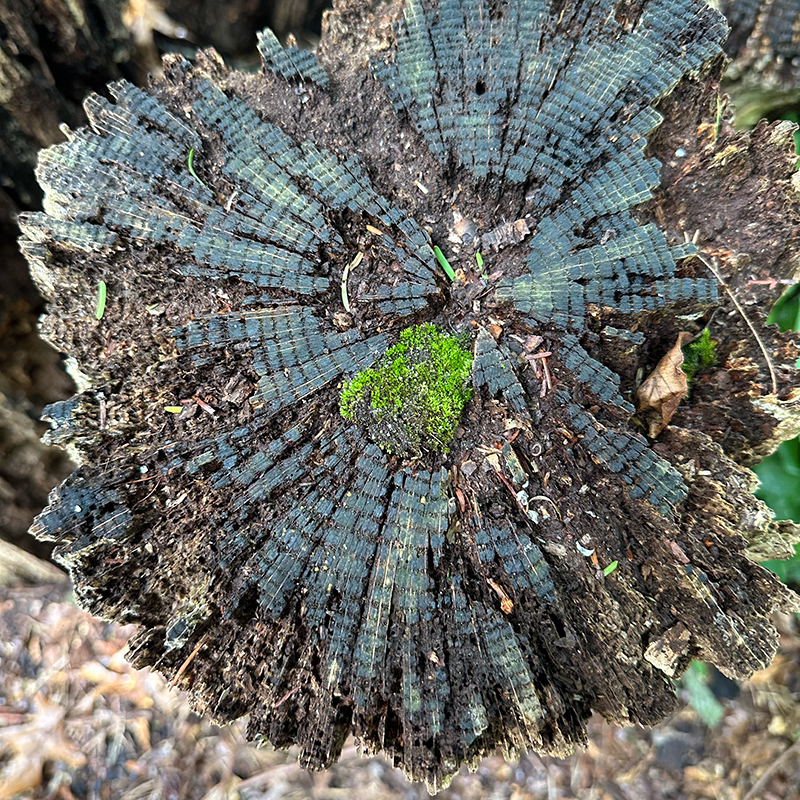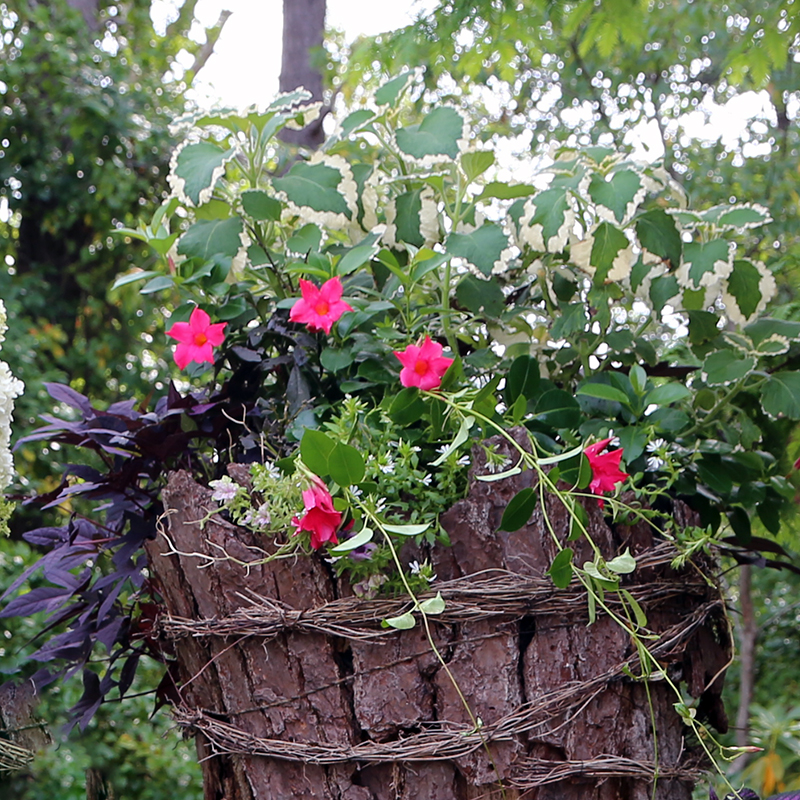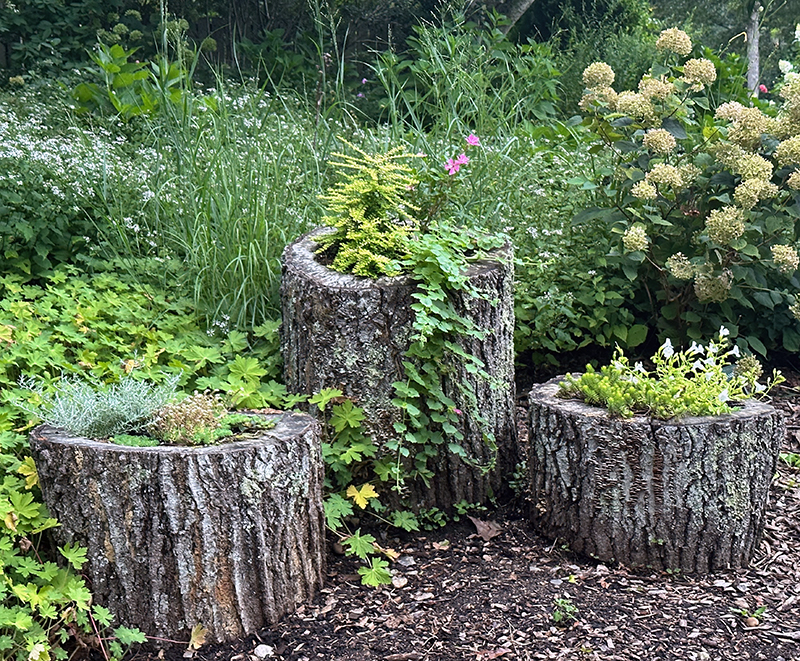If you’ve got a tree stump – or better yet two or three tree stumps – you’ve got a great place for growing moss, perennials or annuals. Here are some options for growing on or in stumps and tree trunks.

Here is a stump on the left that is planted with moss, and another on the right that contains mixed annuals.The moss is growing on top of the old tree trunk, and the annuals are growing in a Smart Pot that has been covered with slabs of bark. Details below.
Getting Moss Growing on Stumps

There is nothing like an emerald green coating of moss to turn an eyesore into a treasure. See these tips below for growing moss on tree trunks.
- Know that moss cultivation takes patience. You aren’t likely to be successful moving a big chunk of moss onto a stump or log. Be willing to start small: this ain’t instant coffee.
- If possible, harvest and transplant moss from your own property. If you don’t have any, ask friends and neighbors. Do not take moss from wild areas or conservation lands.
- There are many different types of moss. Look at them closely, and see which ones flourish on wood in your region. Use these on stumps or logs.
- Take a small piece and push it into any crevice on the log or stump. If the top of your stump is completely smooth, you might drill some holes where the moss can get started.
- Sometimes squirrels, chipmunks or other critters will dig up newly placed moss to see if there’s anything tasty underneath. If you find that your moss has been removed or displaced, put it back and then cover the area with a piece of wire screening or netting that protects it from wildlife. Once the moss starts to grow, the critters will leave it alone.
- Water frequently. You don’t have to water for long, but sprinkling the moss every two or three days is the key to successfully getting it going. Once moss is established it is very drought tolerant, but moisture is needed to get it started.
- Don’t fall for the Moss Myths online! No, you don’t need beer, buttermilk or anything other than the moss and water to get these Bryophyta going. Does Mother Nature go to her refrigerator when she wants to grow moss? Of course not! (See my book, Coffee For Roses for other common plant and garden myths).
- Make Moss Art! Combine other natural materials such as twigs, stones, or shells on top of your stumps to create a natural work of art. As the moss grows it will keep the other components in place, and may even grow over them. It’s all good. Enjoy.

This stump was planted with moss and a sea shell was placed there early on, so it became held in place with the moss.

I’m starting moss around these rocks to create living art. Eventually the moss with hold the stones, and may even cover them.

Be willing to start with small pieces – trying to get a big piece of moss transplanted is seldom successful.
Annuals or Perennials There are two ways to grow annuals or perennials on stumps: Using hollow trunks or drilling them out, or topping the trunks with a fabric pot filled with potting mix and covered with bark or other natural materials to hide the bag.

When we had a collection of logs that were too large and heavy to cut for firewood, I made them into a fairy garden come to life with Smart Pots. Those pots were filled with potting mix and covered with slaps of bark.

Here is how the top log looked with the bark in place – I used bark-covered wire, which is available from craft supply stores, to hold the slabs in place.

These three logs were already hollow. All I had to do was fill them with soil, and plant. At first I used a combination of annuals and perennials – mostly low sedums – and now the perennials fill the entire pots.

0 Comments